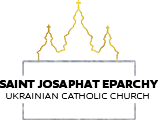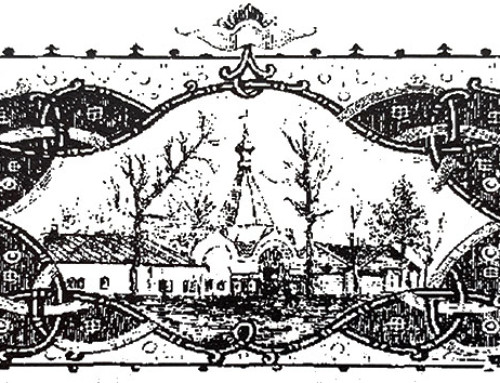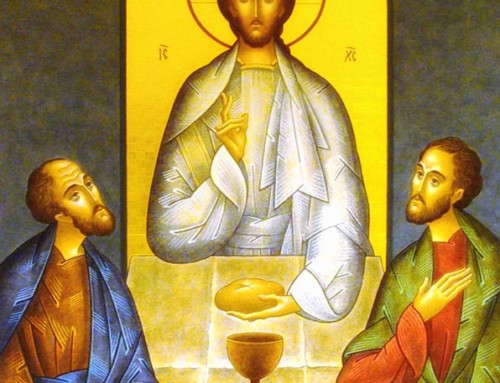Except, perhaps, when a bishop leads the Divine Liturgy, there is no visible “recessional” in the service. The simple necessity of having clergy and people leave the Holy Place is now obscured by later changes, not all of them logical. As we said, in the earliest era the order would be given, “Let us go forth in peace!” and the people would respond, “In the name of the Lord!” and the clergy (except for the junior presbyter) would simply leave the church in the reverse order in which they came in. Soon it became the custom for the bishop to stop before reaching the door of the church and say a prayer. The theme of this prayer would be connected to the day being celebrated. In our time several of these ancient prayers have been collected and published and are being heard again in our churches. This prayer completed, the clergy would finish exiting the church.
It is very different today. The injunction, “Let us depart in peace!” is stillborn. Immediately after the reply of the people, the deacon calls, “Let us pray to the Lord.” A priest, usually the junior presbyter if many are serving with the bishop, leaves the sanctuary and stands either facing the icon of Christ, or else on the people’s side of the tetrapod, and says what was once the prayer for distributing the antidoron, bread left from the Liturgy but not consecrated, simply blessed (usually at the great hymn to the Mother of God in the anaphora).
Originally the clergy (except for the priest who would distribute the antidoron) would process back toward the entrance of the church. In time, a last prayer was added there, a final good-bye one might say, called the prayer za amvona in the Slavonic text of the Liturgy; technically, “on or from the ambo,” which was originally a raised platform in the center of the narthex, the body of the church, and from which the Scriptures were read and from which cantors led responses. In time it was moved up to the front of the Holy Place, and became part of the platform known as the bema or solea. St. John Chrysostom is reputed to be the first to preach from the ambo. These “ambo” prayers usually reflected the theme of the day’s celebration, and have been reintroduced into the service in some places today, although not at the door of the church. Rather, if any of these “ambo prayers” are recited, it usually replaces the prayer of the antidoron recited in front of the icon of Christ, or else in front of the bema, or in front of the tetrapod. Today, at the conclusion of either prayer (antidoron or ambo), there is a tack-on ending similar to the usual conclusions in the Liturgy of the Hours. The simple exit of the clergy has been turned into a much more complex finale to the divine service.


